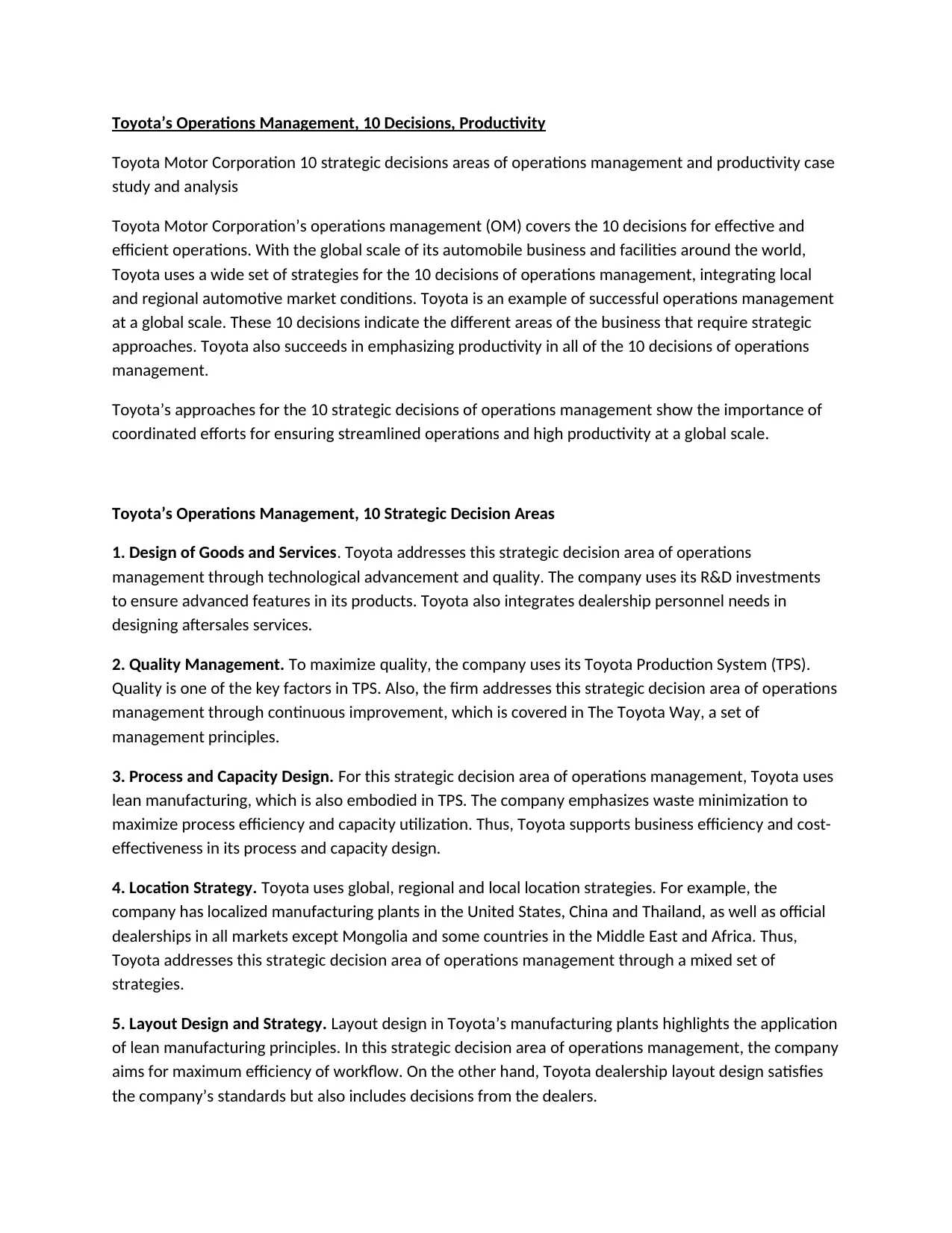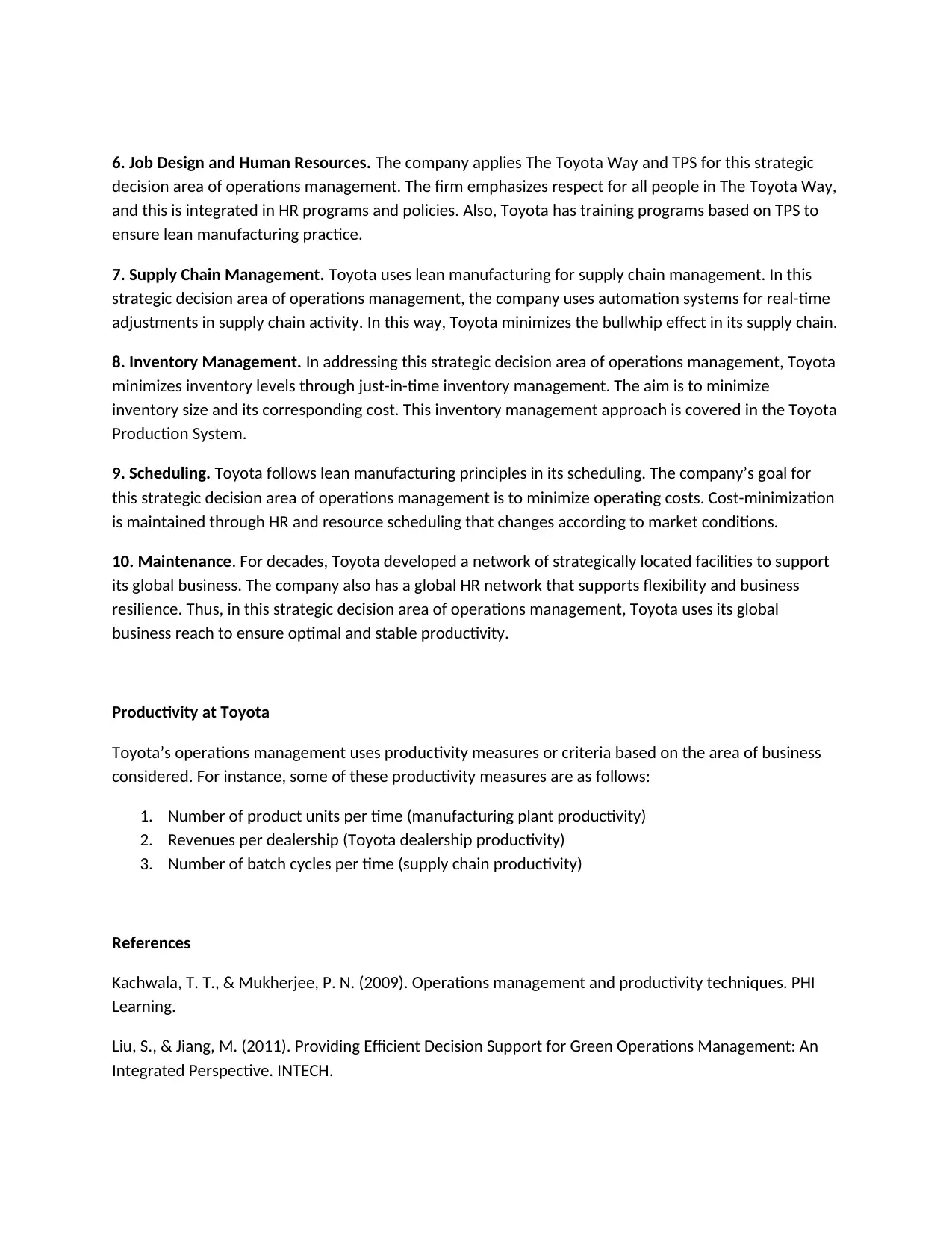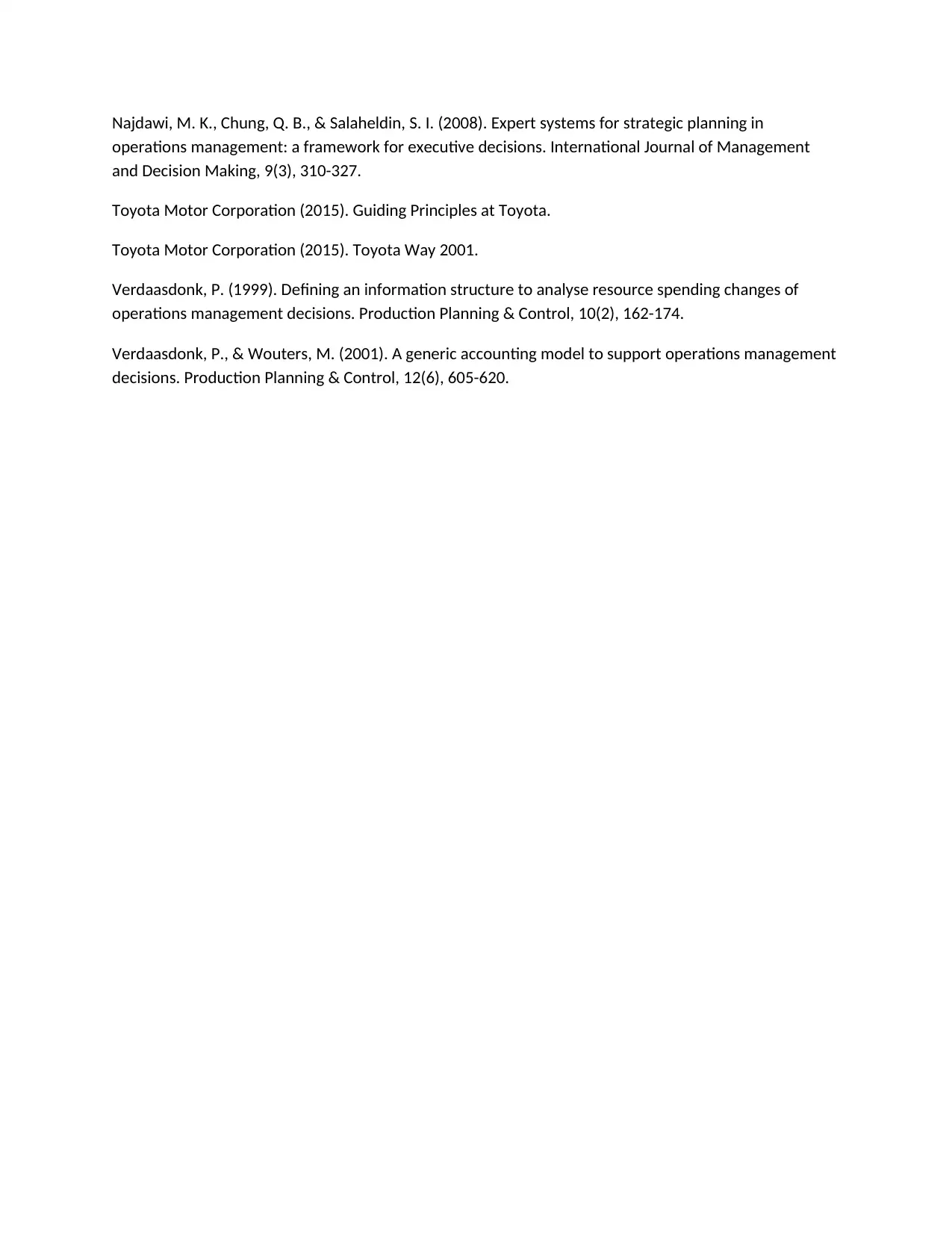Case Study: Toyota's Operations Management and Productivity Analysis
VerifiedAdded on 2023/01/17
|3
|991
|71
Case Study
AI Summary
This case study provides an in-depth analysis of Toyota's operations management, focusing on the ten strategic decision areas that contribute to its global success. The study examines how Toyota integrates technological advancements and quality in its product design, utilizes the Toyota Production System (TPS) for quality management and lean manufacturing for process and capacity design. It explores Toyota's global, regional, and local location strategies, efficient layout designs, and human resource practices based on The Toyota Way and TPS. The case also investigates Toyota's lean manufacturing approach to supply chain and inventory management, cost-minimization strategies in scheduling, and its global network for maintenance. The study highlights productivity measures, such as product units per time, revenues per dealership, and batch cycles per time, illustrating Toyota's commitment to operational efficiency and continuous improvement. The analysis is supported by references to relevant academic literature and Toyota's own publications on its guiding principles and production system.
1 out of 3









![[object Object]](/_next/static/media/star-bottom.7253800d.svg)